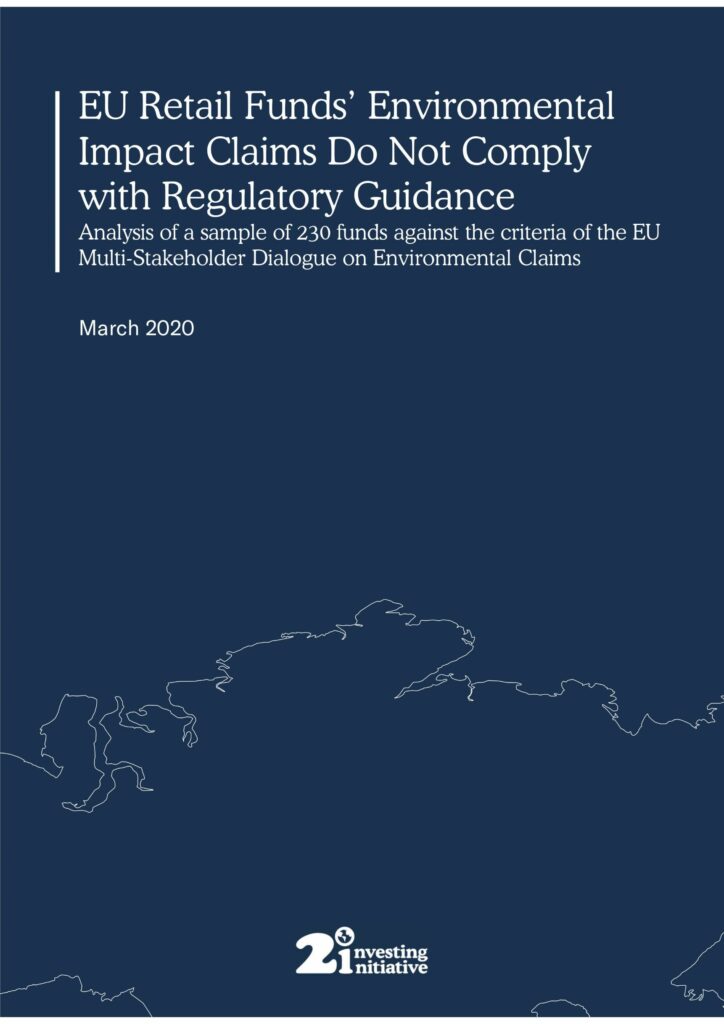We then analyzed the funds’ environmental impact claims against regulatory guidance. Our findings indicated that while the majority of consumers wish to invest sustainably, many of them are confused by environmental impact claims. Additionally, we found that 52% of the funds made environmental impact claims of some kind – and 99% of these claims were misaligned with guidance that requires them to be specific, unambiguous and substantiated.
-
Survey results
40% of retail clients want to have an environmental impact with their savings
According to our surveys, 65% to 85% of retail investors in Germany and France say they want to invest more sustainably. These results are aligned with results from other studies in Germany and France, as well as other countries. When asked what outcomes they expected from investing in sustainable products, consumers cited three end goals:
- Optimizing return on investment
- Avoiding guilt by association
- Having an impact in the real economy
40-50% of respondents mentioned the last one as their main objective when choosing more sustainable investments, or cited skepticism about impact as the main reason for not choosing these products. These results imply that ESG preferences should be included in the suitability assessment to be performed by financial institutions when providing investment advice.
-
State of the art literature review and legal framework
Substantiation of environmental impact claims: obligations and obstacles
Over the past 20 years, many sustainability-related investment techniques (and related products) have been developed by asset managers in the area of mainstream financial products: e.g. exclusion, positive screening, thematic investing, impact investing, shareholder action, etc.
While one could argue that each of these techniques may indirectly contribute to reorienting investments in the real economy, most of them are not explicitly designed to deliver this outcome, and do not provide any measurement of their effectiveness in delivering this type of benefit. In addition, there is almost no academic research on how those strategies could have such an impact in the real economy, as shown by recent academic papers and as confirmed by our own review of existing literature.
Therefore, we identify a significant gap in the tools and methodologies available to assess what can be defined as ‘investor impact’ (as opposed to the ‘company impact’, i.e. the impact of the investee). This is particularly problematic since the regulatory guidance applicable to environmental claims sets the bar relatively high regarding the required standard of evidence, as such claims must be supported by “robust, independent, verifiable and generally recognized evidence which takes into account the latest scientific findings and methods”, built for example upon the latest developments of EU’s initiative to create standards in environmental footprint assessment.
The applicable guidance is also quite demanding as to the content and presentation of environmental claims, which should always be presented “in a clear, specific, accurate and unambiguous manner, to ensure that consumers are not mislead”. Our review of market practices led us to identify major misalignments with regards to these indications.
-
Compliance
99% of environmental impact claims reviewed are misaligned with regulatory guidance
In the second half of 2019, we reviewed 230 European retail funds (representing €139 billion in assets under management (AuM)), explicitly presented as having a link to environmental characteristics through the implementation of socially responsible investing (SRI), green thematic and green bond approaches. For each of the funds, we searched online sustainability-related commercial communications available and gathered, in parallel, information on the investment strategies and techniques implemented to understand how to interpret the marketing material.
Our analysis concluded that 52% of the funds of our sample made environmental impact claims, almost all of which were misaligned with the applicable regulatory guidance. Mainly, they failed either the ‘substantiation test’ (by being unable to reflect a “verifiable environmental benefit or improvement” due to the essence of the financial products and investment strategies to which they relate) or the ‘accuracy test’ (as they were incorrect, unclear, or too broad to be in line with the compliance criteria).
In addition, in Q3 2019, we surveyed 2,000 German retail investors and 2,000 French retail investors in order to assess the extent to which they were confused by environmental impact claims of the kind we had identified. We found that the concept of environmental impact was unclear to a large majority of respondents and that many were confused by environmental impact claims.
-
Recommendations
First, it is critical to build evidence on the “environmental impact” of different investment strategies and techniques, understood as their ability to contribute to the reorientation of investments in the real economy from unsustainable (e.g. coal-fired power production) to sustainable activities (e.g. renewable power production) that generate GHG emission reductions and other sustainability impacts.
Financial products should be analyzed based on the investment strategies’ effectiveness in delivering these outcomes, in terms of the influence they have on decision-making in the real economy (which is a complex issue).
In addition, we recommend clarifying the compliance criteria applicable to financial products, by building a specific interpretative framework upon the existing principles. Last but not least, it will be crucial to investigate which investment products can contribute to measurable impact and should be leveraged to help achieve the objectives of the action plan on sustainable finance.
About our funders:
To produce this report, 2° Investing Initiative has received funding from the Hewlett Foundation and the European Union’s Life IP programme under grant agreement No LIFE18/IPC/FR/000010 A.F.F.A.P. This report reflects the authors’ views only, and the funders are not responsible for any use that may be made of the information it contains.




